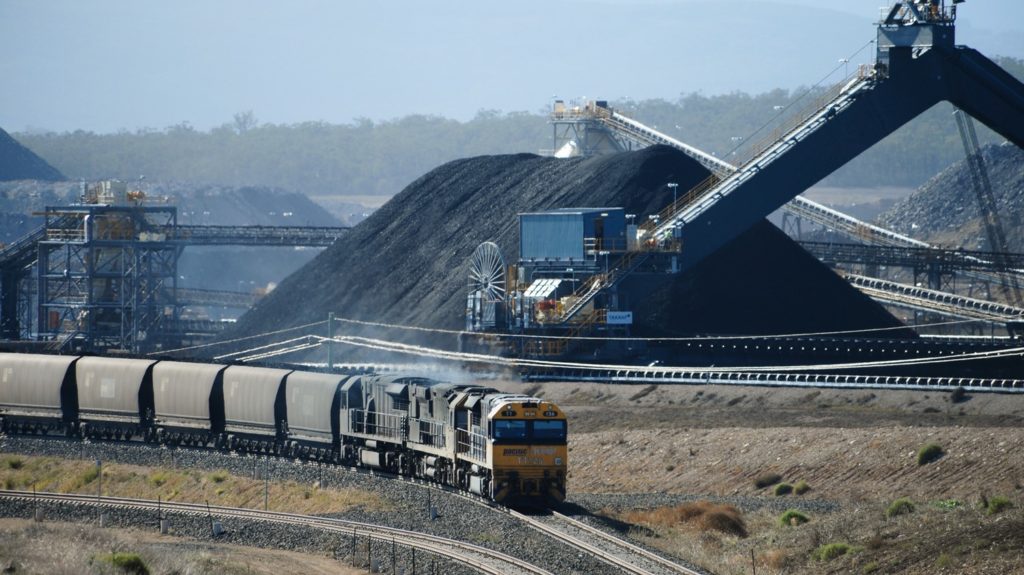8 July 2018
Coal chief banks on new demand wave

From the Australian Financial Review – 7 July 2018
Whitehaven Coal chief executive Paul Flynn has urged Australia to seize the opportunity from the build out of new coal-fired power stations across Asia.
Mr Flynn said it made no sense to ignore the boom in demand for high-quality coal as Asian nations invested in high-efficiency, low-emission technology (HELE) power stations.
He pointed to International Energy Agency forecasts which show thermal coal demand in south-east Asia increasing from 187 million tonnes to 452 million tonnes by 2040. The increase is more than double the 200 million tonnes of thermal coal shipped out of Australia in the past year when exports hit a record $23 billion.
Although Whitehaven already sells into south-east Asia, its bigger customers are Japan, Korea and Taiwan where there is strong underlying demand for high-quality coal.
“The country as a whole really needs to embrace this opportunity because the wave of demand that is coming at us with this build out of power stations is enormous,” Mr Flynn said.
He said one consequence of Australia not meeting that demand and leaving the door open to suppliers of lower quality coal was far worse emission outcomes.
Thousands of new jobs in mining and mining services and billions of dollars in royalties payment were also at stake, he said.
To me it just seems like the most obvious opportunity to participate even further in this growth in electricity demand in south-east Asia in particular.”
Mr Flynn’s comments came at the end of a bittersweet week for the coal industry.
Leading ASX-listed coal producers entered the new financial year on the back of big rises over the past 12 months; the Department of Industry, Innovation and Science predicted coal would regain its crown as Australia’s biggest export earner in 2018-19; and the Newcastle benchmark spot price for thermal coal closed in on $US120 a tonne.
The good news was tempered by the continuation of a dispute between rail operator Aurizon and Queensland producers of metallurgical and thermal coal, which threatens to cut exports by 20 million tonnes this year.
And in a move that lifted the value of funds pledging to steer energy-intensive companies away from coal to more than $1 trillion, UniSuper and QSuper put their combined $147 billion of funds under management behind the global Climate Action 100+ group.
Reinsurance giant Swiss Re also weighed in by saying it would not underwrite policies for companies with more than 30 per cent of thermal coal in their mining or powergeneration portfolios.
Yancoal, which also said this week it had found Asian capital markets far more willing to back its Australian coal expansion plans than local fund managers, was quick to hit back at Swiss Re.
Rich lister and Whitehaven director Tony Haggarty, Queensland Resources Council chief executive Ian Macfarlane and New Hope managing director Shane Stephan all also came out swinging in support of the industry.
The industry leaders put the spotlight back on the torturous approval process for new mines and domestic energy policy after forecasts showed coal exports would hit $58.1 billion in 2018-19 and topple iron ore ($57.7 billion) as the nation’s biggest earner.
While the federal government said the figures strengthened the case for Adani’s Carmichael mine, one fund manager pointed to supply side management by Glencore and others as a factor in higher coal prices.
Mr Flynn said the reality was any company with a project approved and ready to go would bring it on line given the tightness in supply.
“The turnaround in the market has been relatively quick so producers are relatively cautious about putting new capital into the ground straight away.
To that end I think there is a little supply-side management going on, but at these prices if you had a project, you would bring it on but there are actually very few of these at the moment,” he said.
Whitehaven is looking to grow production from its mines in the Gunnedah basin in NSW, pushing ahead with its Vickery project and recently acquired the Winchester South metallurgical coal project in Queensland’s Bowen basin.
Yancoal is focused on brownfields expansion while New Hope continues a 10-year battle over stage 3 of its New Acland mine in Queensland and has longer term plans for mining in the Surat basin to supply new power stations in Asia from 2024.
Commodity Insights research suggests Asian thermal coal demand will grow from 740 million tonnes in 2017 to 1147 million tonnes in 2030. It expects all countries in the region with the exception of Japan to increase imports and the forecast is not dependent on China.
The drivers of growth include north Asian policy decisions to move away from nuclear power in the wake of the Fukishima incident in 2011, population growth and a push to increase coal’s share in the power generation mix in large parts of south-east Asia.
Indonesia, the biggest exporter of seaborne thermal coal with shipments of 392 million tonnes last year, has commissioned new coal-fired capacity over the next decade which Commodity Insights estimates could divert 160 million tonnes from the export market to domestic use.
Mr Flynn said most people understood the role coal had played in Australia’s prosperity and its place in the supply of affordable, reliable electricity.
“There is no doubt that the energy policy malaise we have suffered in Australia for many, many years and its consequent impact on electricity prices is focusing the broader community on this whole dynamic,” he said.
“You can’t ignore coal. It is the cheapest, most reliable form of electricity that you can produce today. We are only where we are [with energy prices] by virtue of poor policy choices and subsidies which are the transfer of taxpayers’ money into the hands of proponents of renewable energy.”
Back to News
 Whitehaven coal
Whitehaven coal